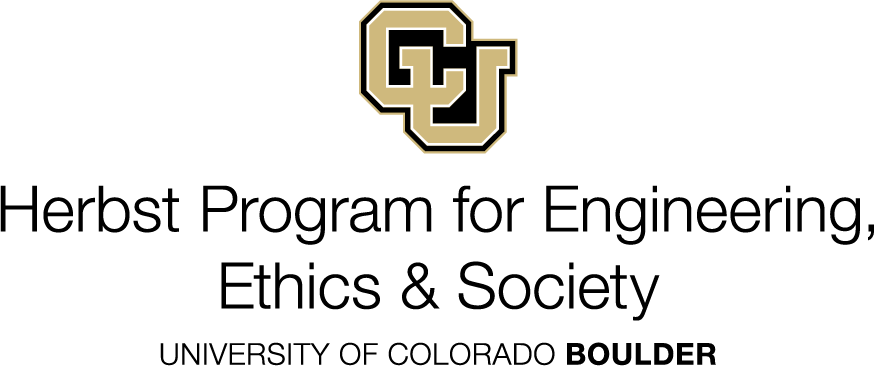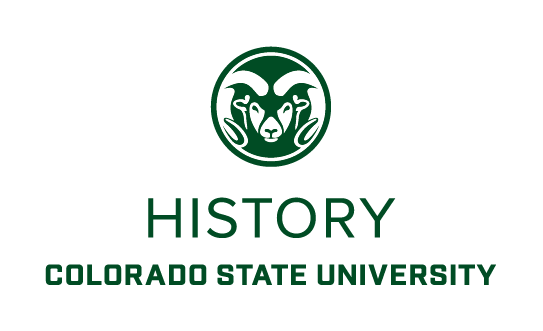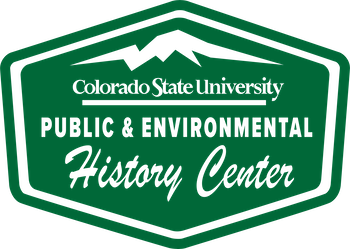
ASEH 2024 Field Trips |
Field Trips – ASEH 2024 Annual Meeting Denver Friday Afternoon, April 5, 2024 1) Auraria As We Knew It: A Walking Tour Leaders: Justin Porcelo and Summer Carper Participants: Maximum 30 [SOLD OUT] In 1965, Denver’s Auraria neighborhood received a notice outlining the scope of their displacement—the neighborhood was chosen for one of Denver’s largest Urban Renewal projects. The tight-knit Chicano community occupied space that held the future for Denver’s higher education, and 900 individuals were displaced from the area to build the Auraria Higher Education Center, made up of CU Denver, Metropolitan State College (now University) of Denver, and the Community College of Denver. This tour explores the history of Auraria from the perspective of its displaced residents. It begins on Larimer Square, the historic center of downtown, to examine the relationship of the neighborhood to greater Denver, continues to the former industrial corridor on campus, and ends on a pleasant block of brightly colored Victorian-era homes on the Auraria campus now officially designated as a Historic District. Requires two miles of non-strenuous walking. Cost: Free Meet in Hotel Lobby at 1:30 pm. Tour will leave from there. Lunch not included. 2) Denver Unhoused: A Walking Conversation Leaders: Phoebe Young, Thomas Andrews, Local Experts Participants: Maximum 30 [SOLD OUT] How do we share urban civic space and public nature? How might we understand the environmental and historical challenges of people experiencing homelessness? On this walk, we will visit several key sites and local agencies at the center of these important questions. Experts at the Colorado Coalition for the Homeless, the Denver Public Library, and the Civic Center Conservancy will share their perspectives on camping, public health, climate, food, housing, and parks and green space. Along the way we will engage in a walking conversation about how we might approach issues of homelessness, past and present, with an environmental historical lens. Guiding the stroll and dialogue will be CU Boulder History faculty, Phoebe Young, who will draw on her recent work on the history of camping (Camping Grounds: Public Nature in American Life from the Civil War to the Occupy Movement), and Thomas Andrews, Denver resident and Colorado history expert. Requires three miles of non-strenuous walking. Cost: Free Meet in Hotel Lobby at 1:30 pm. Tour will leave from there. Lunch not included. 3) Guided Exhibition Tour: The Sand Creek Massacre: The Betrayal that Changed Cheyenne and Arapaho People Forever Leader: Sam Bock Number of People: Maximum 35 [SOLD OUT] Join lead exhibition developer Sam Bock for a tour of the History Colorado Center’s new exhibit, The Sand Creek Massacre: The Betrayal that Changed Cheyenne and Arapaho People Forever. Created over the course of ten years in partnership with the three Cheyenne and Arapaho Tribal Nations, this exhibition tells the story of the deadliest day in Colorado history from the point of view of Cheyenne and Arapaho descendants and survivors. Learn about the project’s bumpy beginnings and the lessons learned from the museum’s close collaboration and trust-building with tribal nations that culminated in this moving exhibition. The tour will last approximately two hours, but participants may take in other exhibits afterwards on their own time. Cost: Free Meet in Hotel Lobby at 1:30 pm. Participants will walk or take public transportation to History Colorado (or meet at History Colorado at 2 pm). Lunch not included. 4) The Nuclear Legacies of Rocky Flats National Wildlife Refuge Leaders: Ken Osgood, Rachel Osgood Participants: Maximum 40 [SOLD OUT] The Rocky Flats National Wildlife Refuge appears pristine. Hiking and biking trails take visitors through swaying grasslands with views of the Denver skyline to the east and the Flatirons to the west. Maps of the refuge note that a large portion of the preserve, a “Department of Energy Legacy Site,” is closed to visitors, but the signage says nothing about what took place there. For more than four decades, Rocky Flats produced the explosive cores for the all the nuclear warheads in the U.S. arsenal. Its long history includes accidental releases of radioactive plumes, poisoned streams and reservoirs, and a landscape scarred by radioactivity. One structure in the sprawling Rocky Flats complex was so saturated with radioactivity it was dubbed “the most dangerous building in America.” Some of the biggest and most sustained protests of the Cold War era focused on Rocky Flats, a fusion of the environmental and peace movements. In this tour, we will circumnavigate the refuge (by bus), stopping at key locations to assess its hidden history. We will not venture too far into the site, but we will take in some majestic views. Visitors will want to dress warmly, as it is often windy there (a part of its legacy we will explore). If time allows and depending on the size of the group, we may conclude the tour at The Flats Lounge, which once served as both a bar (and still does) and payroll office for Rocky Flats workers. Cost: $65/40 Student Meet in Hotel Lobby at 12:15 pm. Lunch included. 5) The National Center for Atmospheric Research and Urban-Wildland Fire Mitigation Leaders: Tina Gianquitto and Sarah Stanford-McIntyre Participants: Maximum 40 This two-part trip includes a presentation by Boulder’s Open Space and Mountain Parks (OSMP) rangers on fire management challenges in Boulder’s urban-wildland interface and a tour of the National Center for Atmospheric Research (NCAR), an NSF-funded center for atmospheric and earth systems science. Participants will begin with a short walk between three stations located on the trails behind NCAR. Topics will include OSMP’s forest management planning, wildland firefighting, and fire ecology. NCAR itself is just a few miles from one of the costliest wildfires in the state (the Marshall Fire in December 2021) and lies in the shadow of another fire that happened only a few months later (April 2022). Following the ranger presentation, participants will tour NCAR’s Mesa Laboratory – designed by I.M. Pei and sitting atop a mesa with gorgeous views of Boulder and the Flatirons – and hear about the history of NCAR’s climate and weather modeling research and technology. There may also be opportunities for participants to hike longer distances if they prefer. Cost: $65/40 Student Meet in Hotel Lobby at 12:15 pm. Lunch included. 6) Red Rocks Amphitheater Leaders: Michael Childers, Denver Parks & Recreation staff Participants: Maximum 30 [SOLD OUT] The Red Rocks Amphitheater is the crown jewel of Denver’s Mountain Parks, a unique system of city-owned parks in the Rocky Mountain foothills west of Denver. Opened in 1941, Red Rocks has hosted thousands of performances and is considered one of the most stunning concert venues in North America, with spectacular views of Denver and the plains. Carved out of the uplifted sandstone by Civilian Conservation Corps workers, its unique geology is but one of the reasons people flock to the venue year-round. The tour will be led by a Denver Parks & Recreation ranger and will include the iconic music venue, its museum, and the nearby Mount Morrison CCC camp, which contains one of the largest collections of intact CCC buildings in the United States. Weather permitting, we will also take a short hike in the surrounding trail system. Appropriate clothing for Colorado weather in April, which can be unpredictable, is strongly suggested. Cost: $65/40 Student Meet in Hotel Lobby at 12:15 pm. Lunch included. 7) Rocky Mountain Arsenal National Wildlife Refuge Leader: David Havlick Number of People: Maximum 25 [SOLD OUT] Located on the outskirts of Denver and adjacent to Commerce City, the innovative Central Park neighborhood, and Denver International Airport, Rocky Mountain Arsenal National Wildlife Refuge features 16,000 acres of shortgrass prairie and hosts a variety of species including black-tailed prairie dogs, coyotes, whitetail and mule deer, bison, black-footed ferrets, burrowing owls, bald eagles, and a variety of songbirds and waterfowl. Prior to its designation as a wildlife refuge in 1992, the Rocky Mountain Arsenal served as a chemical weapons plant for the US Army, manufacturing products ranging from nerve gases and napalm to jet fuel and DDT. It became a Superfund site in 1987. This field trip examines the mixed legacies, environments, and multi-billion-dollar cleanup of the site once described as containing the most toxic square mile on Earth. The visit to the refuge will include a stop at the visitor center, a driving tour, wildlife viewing, and several short hikes on refuge trails. Please wear appropriate shoes and clothing. Cost: $65/40 Student Meet in Hotel Lobby at 12:15 pm. Lunch included. 8) Historic Lincoln Hills Leaders: Terri Gentry, Hon. Gary Jackson, and Jared Orsi Number of People: Maximum 30 Established in 1922, Lincoln Hills was one of the few resorts built by and for Black citizens West of the Mississippi. For more than forty years it welcomed distinguished visitors from across the nation as well as Black Coloradans as Denver’s Phillis Wheatley Branch of the Black YWCA. It has also provided a haven for Black middle-class property owners who built second homes in the community. Today the area is mostly private property but is one of the few Black-owned resorts that continues to thrive. Join History Colorado’s Terri Gentry and retired Denver County judge Gary Jackson, an owner of Lincoln Hills’s historically designated cabin, for a bus and walking tour of this historic area that testifies to the history of segregation, outdoor recreation, home ownership, and community hope. Come prepared for Spring mountain weather, including the likelihood of snow in places, and high altitude conditions (Lincoln Hills is at 8400 feet). Dress warmly with comfortable walking shoes. *This trip is weather dependent. If the weather does not allow us to visit Lincoln Hills, we may instead visit several local museums that highlight the history of Lincoln Hills and the African American experience in Colorado and the West. Cost: $65/40 Student Meet in Hotel Lobby at 12:15 pm. Lunch included. 9) Birding at Barr Lake Leaders: Fritz Davis and Bird Conservancy of the Rockies Number of People: Maximum 45 Barr Lake State Park, 25 miles northeast of downtown Denver, is one of the premier bird-watching sites in the metro area. More than 350 species have been spotted in the park, including bald eagles, which winter at the lake. The lake itself is an historical artifact, the product of an 1880s dam built (and later expanded) across one end of a buffalo wallow that was then filled with water from the South Platte River via the Burlington Ditch and, later, the O’Brian Canal. During the mid-20th century, as human sewage and slaughterhouse wastes poured into the South Platte, Barr Lake became one of the largest open sewage lagoons in the nation. But the lake was flushed and cleaned up in the 1960s, during the nation’s environmental awakening, and Barr Lake State Park opened to the public in 1977. The lake itself remains privately owned, and its waters supply farmers, urban water users, and the oil and gas industry. Open to birders of all levels and those interested in a good walk. We will be joined by a representative from the Bird Conservancy of the Rockies, which has their headquarters at Barr Lake. Cost: $65/40 Student Meet in Hotel Lobby at 12:15 pm. Lunch included. Field Trip, Sunday April 7 - 8:30am-6:00pm 10) Historic Pueblo, Colorado Leaders: Adam Thomas and Local Experts Number of People: Maximum 25 Once home to one of the biggest steel mills the United States, Pueblo was the city that built the American West. Controlled by John D. Rockefeller, Jr.’s Colorado Fuel & Iron Company, which also owned the extensive coal fields of southern Colorado, Pueblo’s steelworks attracted a diverse workforce that indelibly shaped the city’s history. With its incomparable architecture and recent history of urban renewal, Pueblo provides a case study in human and environmental interaction—a space of constant contestation and evolution. This tour will include the El Pueblo History Museum, which showcases the early history of the region and its many cultural and ethnic groups. We will also stop at the Steelworks Center of the West, home to an extensive collection relating to the Colorado Fuel & Iron Company and its gigantic Minnequa Steelworks. In the historic, working-class Bessemer neighborhood, we will explore one of Pueblo’s most recently landmarked buildings, the St. Paul African Methodist Episcopal Church. We will also spend some time strolling the Arkansas Riverwalk and the adjacent Union Avenue Historic District, and we’ll venture to Pueblo’s hinterlands and the Hispanic enclave of Salt Creek, home to one of the state’s most important environmental justice stories. Cost: $135/85 Student Meet in Hotel Lobby at 8:15am. Return by 6:00pm. Lunch not included – individuals will buy lunch in Pueblo. |
Thank You |
|
|
|  |
|
|
|
|








